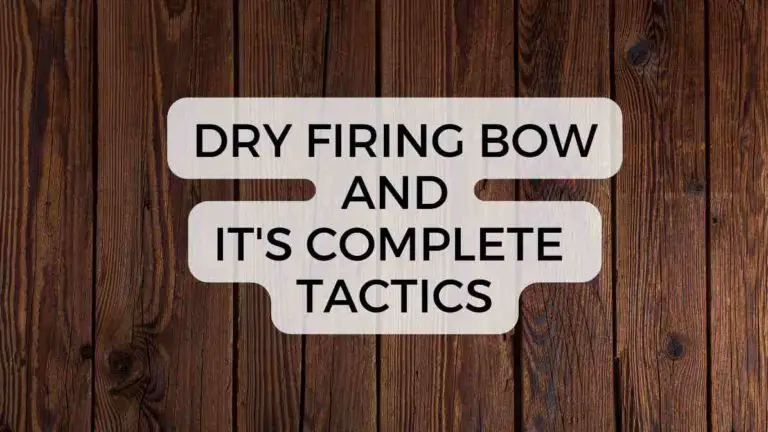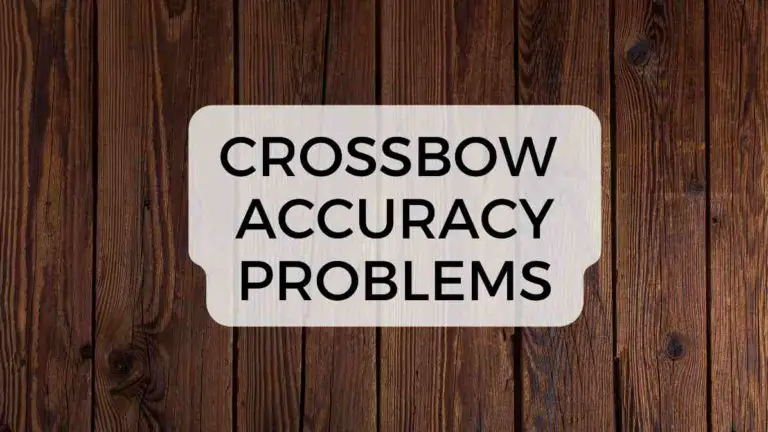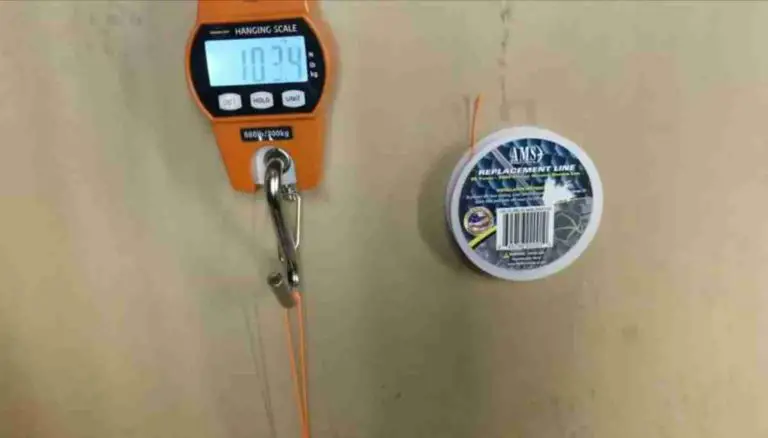Why Arrows Spin In Flight: Everything you Need to Know
An arrow, when shot from a bow, typically does not spin in flight like a bullet fired from a rifled barrel.
Instead, arrows are designed to fly straight due to their unique fletching, which consists of feather or plastic vanes attached near the back end of the arrow.
These vanes create stability by causing the arrow to rotate slowly in the air, which is known as “gyroscopic stabilization.”
This rotation helps the arrow maintain a stable flight path and accuracy.
However, the rotation of an arrow is much slower than the rapid spin of a bullet from a rifled firearm barrel.
The primary purpose of this spin is to counteract any minor imbalances in the arrow’s construction and to prevent it from “porpoising” or wobbling in the air.
It’s worth noting that there are specialized arrows known as “helical fletched arrows” that can be used for specific purposes, such as long-range shooting or hunting. These arrows have a pronounced helical (spiral) fletching, which imparts a more pronounced spin to the arrow, improving stability and accuracy over longer distances.
Why Do Arrows Spin In Flight
Arrows spin in flight to improve their stability and accuracy. When an arrow is shot from a bow, it experiences various forces that can cause it to deviate from its intended path. The spinning motion of the arrow helps counteract these forces and keep the arrow on a more consistent trajectory.
Stability in flight
The spinning motion of an arrow creates gyroscopic stability, similar to how a spinning top stays upright.
This stability is crucial for accuracy, as it helps the arrow maintain a straighter path through the air.
Without spin, the arrow would be more susceptible to factors like wind, air turbulence, and minor imperfections in the arrow itself, which could cause it to veer off course.
Countering forces
Arrows experience several forces in flight, including drag, gravity, and the Magnus effect.
The Magnus effect is the phenomenon in which a spinning object experiences a lift or deflection force due to the rotation.
By spinning, an arrow can counteract these forces and maintain a more stable flight.
Feather fletching and spin vanes
The feathers or plastic fletching on an arrow are angled in a way that causes the arrow to spin in flight.
This spinning motion helps average out any errors in flight and adds stability. Traditional feathers are designed to create a natural spin, while spin vanes have a curved profile specifically designed to enhance arrow rotation.
In conclusion, arrows spin in flight to improve their stability, accuracy, and resistance to external forces. The spinning motion helps counteract factors that can cause the arrow to deviate from its intended path, resulting in more consistent and accurate shots.
How Fast Does An Arrow Spin
The speed at which an arrow spins can vary depending on several factors, including the design of the arrow, the type of fletching used, and the bow’s characteristics.
However, on average, arrows fired from a compound bow or a traditional recurve bow typically rotate at a rate of about 1 to 2 full revolutions per yard of travel.
To put this in perspective, if an arrow travels 20 yards, it would complete approximately 20 to 40 full rotations during its flight.
This slow and controlled spin is enough to provide stability to the arrow without causing excessive drag or affecting its accuracy.
It’s important to note that the exact spin rate can vary based on factors like the arrow’s length, weight, and fletching design, as well as the bow’s draw weight and the archer’s shooting technique.
Some archers may use specialized equipment and techniques to achieve a more consistent and controlled spin for specific purposes, such as long-range accuracy or hunting.
How To Spin Test Arrows
Testing the spin of arrows is an essential step in ensuring their stability and accuracy in flight. To perform a spin test on arrows, follow these steps:
Gather the Necessary Equipment:
- The arrows you want to test.
- A suitable arrow rest.
- A bow compatible with your arrows.
- A fletching jig (optional).
- A broadhead or field point (the tip of the arrow).
- A stable and safe shooting environment like an archery range.
Prepare the Arrows:
- Make sure the arrows are in good condition without any visible damage.
- Attach a broadhead or field point to the front of each arrow if they aren’t already equipped.
Set Up Your Bow:
- Use a bow that matches the draw weight and specifications of the arrows you intend to test.
- Set up your bow on a stable surface or in a bow stand.
Attach the Arrow Rest:
- Ensure that the arrow rest is securely mounted on your bow, and it’s aligned correctly to provide proper arrow support during the test.
Fletching Orientation:
- Pay attention to the orientation of the fletching on the arrows. The fletching should be oriented correctly, meaning that all vanes or feathers should be aligned in the same direction. This ensures consistent arrow flight.
Draw and Release:
- One by one, nock an arrow onto the bowstring, making sure it’s secure.
- Draw the bowstring and aim at your target or a safe, open area.
- Release the arrow, allowing it to fly downrange.
Observe the Arrow’s Flight:
- As the arrow travels through the air, observe its flight closely.
- Look for any signs of wobbling, wiggling, or erratic behavior. These could indicate problems with the arrow’s balance or spine.
Repeat the Process:
- Test each arrow in the same manner, noting any differences in their flight characteristics.
Interpret the Results:
- Arrows that spin smoothly and fly consistently are well-balanced and likely to perform accurately in various shooting scenarios.
- Arrows with noticeable wobbling or instability may require adjustments, such as changing the fletching orientation or selecting arrows with a different spine or weight.
Make Necessary Adjustments:
- If you identify issues with certain arrows, consult with an experienced archer or bow technician to make the necessary adjustments, such as re-fletching or selecting different arrows that better match your bow.
It’s important to remember that achieving the right arrow spin and stability is crucial for accuracy in archery. Regular spin tests can help you identify and address any issues with your arrows, ensuring consistent and precise shooting.
What Causes An Arrow To Spin
An arrow spins during flight primarily due to the design of its fletching and the way it interacts with the air. Here’s a more detailed explanation of what causes an arrow to spin:
Fletching Design:
Arrows are typically equipped with fletching, which consists of feather or plastic vanes attached near the back end of the arrow. These fletchings are usually set at a slight angle relative to the arrow’s shaft.
The vanes or feathers are not symmetrical; one side is slightly concave while the other is convex. This asymmetry creates aerodynamic forces during flight.
Air Pressure Differences:
As the arrow moves forward, the air pressure on the convex side of the fletching is slightly higher than on the concave side.
This pressure difference creates an aerodynamic force that pushes the arrow to rotate. This rotation is known as “gyroscopic stabilization.”
Stability and Accuracy:
The spinning motion helps to stabilize the arrow in flight.
It counteracts any minor imbalances in the arrow’s construction and prevents it from wobbling or porpoising as it travels towards its target. This stability contributes to the arrow’s accuracy.
Minimizing the Magnus Effect:
The spinning arrow also minimizes the Magnus effect, which is the tendency of a spinning object to curve or deviate from a straight-line path due to the interaction of its spin with the air.
By spinning, the arrow reduces this effect, allowing it to fly on a more predictable trajectory.
The degree of spin and the effectiveness of stabilization can vary depending on factors like the fletching design, arrow length, arrow weight, and bow type. Archers often fine-tune these variables to achieve optimal arrow flight and accuracy for their specific needs.
Which Direction Arrow Spins
The direction in which your arrow spins depends on the orientation of the fletching, which consists of feather or plastic vanes attached near the back end of the arrow.
The fletching is designed to create stability during the arrow’s flight.
In general, the fletching on arrows is attached in such a way that it causes the arrow to spin in a counterclockwise direction as viewed from behind the arrow.
This means that if you were to look at the arrow from behind as it flies away from you, it would appear to rotate in a counterclockwise direction.
This counterclockwise spin, often referred to as a “right helical,” is the most common rotation direction for arrows.
It’s designed to provide stability and accuracy by counteracting any imbalances in the arrow’s construction and preventing it from wobbling in flight.
However, it’s important to note that some archers may choose to use a “left helical” fletching or a straight fletching, depending on their preferences and shooting style.
These alternative fletching orientations can cause the arrow to spin in a different direction.
Frequently Asked Questions
What is arrow spin, and why is it important in archery?
Arrow spin refers to the rotation of an arrow around its axis during flight.
It’s essential in archery because it stabilizes the arrow, improves accuracy, and counters the Magnus effect, which can cause arrows to deviate from their intended path.
How does arrow spin affect accuracy?
Arrow spin contributes to accuracy by reducing wobbling or yawing during flight. A properly spinning arrow is more likely to maintain a consistent and predictable trajectory, leading to better shot placement.
How do I determine the spin direction of my arrows?
The spin direction of an arrow depends on the orientation of the fletching. Most arrows have a counterclockwise spin (right helical) when viewed from behind.
However, some archers choose left helical or straight fletching for different purposes.
Can I change the spin direction of my arrows?
Yes, you can change the spin direction by re-fletching your arrows with a different fletching orientation. Consult an experienced archer or a pro shop for guidance on selecting the right fletching for your needs.
What factors influence arrow spin?
Arrow length, weight, fletching design, bow draw weight, and archer’s shooting technique all influence arrow spin. Properly matching these factors is essential for achieving optimal spin.
Do all arrows need to spin the same way?
Not necessarily. Some archers prefer different spin directions for specific purposes. For example, target archers might opt for a straight fletching, while hunters might choose a helical fletching for stability at longer distances.
How can I test the spin of my arrows?
You can test arrow spin by shooting them and observing their flight. Look for smooth, stable rotations. If you notice wobbling or erratic behavior, adjustments may be needed.
What is the difference between helical and straight fletching?
Helical fletching has a slight spiral, which imparts more spin and stability to the arrow.
Straight fletching, as the name suggests, is aligned straight along the arrow shaft and imparts minimal spin.
Can arrow spin be too fast or too slow?
Arrow spin should be within a specific range for optimal performance. Too slow a spin can lead to instability, while excessively fast spin might result in excessive drag. Finding the right balance is key.
How often should I check and adjust my arrow spin?
It’s a good practice to periodically check your arrows for proper spin, especially if you change any equipment or shooting techniques. Regular maintenance ensures consistent accuracy.
Final Thoughts
Remember that arrow spin is a crucial aspect of archery, and understanding it can help you improve your shooting accuracy and overall performance. If you have more specific questions about arrow spin or archery in general, feel free to ask.




